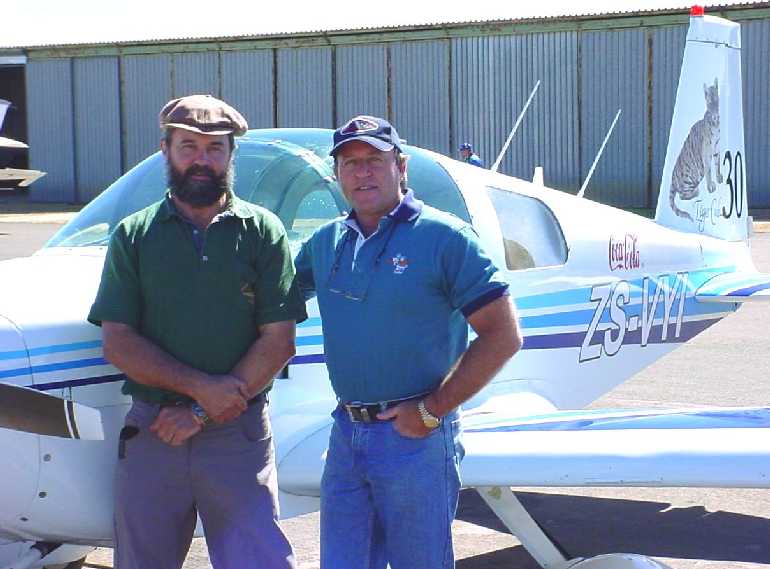2001 President’s Trophy Air Race
President’s Trophy Air Race
Tempe, Bloemfontein – 9 to 11 August 2001.
By Jan Hanekom

Planning went very well after an initial hiccup when the company contracted to do the advertising etc, withdrew. This left SAPFA, Bloemfontein Flying Club and Race Organizer, Johann van Gruting very little time to do all the planning in.
Pre-race day (Thursday the 9th) dawned a nice cool day with 41 aircraft and crews arriving from all over. This decline in numbers compared with last year, were mainly due to the worsening economic conditions, at least according to some of the old participants we have phoned in advance.


“The worst weather in the 70 year history of the race” That is how World Airnews described what faced the contestants in day one of the race. The day (Friday, 10th) started with quite a strong westerly wind (up to 25kts) that blew in a lot of clouds. The route took competitors from Tempe – Reddersburg – Zastron – Barkley East – Bethulie – Tempe. At 10h00 the fastest aircraft took off with the rest following at 30 second intervals. Everything went well until Barkley East where severe turbulence was experienced and a number of competitors also could not get close to, or overhead Barkley East. Some aircraft even flew through a snow storm.
A large amount of radio chatter followed and some competitors called it a day and returned to Tempe. One even landed on a private strip to re-think strategy (or should it read to find out where they are – just joking Mauritz). The fact that all 45 landed safely back at Tempe despite the adverse conditions says a great deal about the responsibility of the crews and the safety of the race.
Twenty-seven aircraft completed the course by getting timed at all the points This left the organizers with only these aircraft still in the Race should the normal rules be applied. This was a first ever and something had to be done to keep the Race alive. The Jury had quite a long session with the Handicapping/Scoring committee and a penalty system (minutes per turn point missed) was introduced to keep everyone in the Race. Extra time penalties were added to aircraft that returned to Tempe without trying to move on to the next point, Bethulie. One of the pilots reported that this was indeed a scary flight and another aircraft lost its compass (got stuck) during the flight.

This proved to be a very nice flying day with all but a few crews who got lost somewhat, achieving much higher speeds – very close to their Handicaps. We had the TV there to witness the finish and Capital Sounds did their usual best to excite the local crowd. At 13h02 and 19 seconds Race 16 (ZS-CHL) with pilot Chris Briers and navigator Dries Briers, blasted through the finish point at an incredible 198 Kts to become the winners of the 2001 PTAR. Race 11 (ZS-PWC) closely followed them with Errol van Rensburg and Andre Koen in second place and Race 30 (ZS-VYI) with Harry Antel and Barry de Groot in third place.

To the competitors – thank you for your incredible sportsmanship and friendliness, and for spending the time and money to participate. Let us take up Marius Venter’s (Imperial Aviation) offer to give everyone who brings another entry next year, R200 back on his or her entry fees. Let us make PTAR 2002 another race to remember.



